
I’ve a buddy who harvests seeds from each fruit or vegetable she eats, and crops them. She now has a ravishing greenhouse, promoting her produce to others. The perfect factor is she has just a little property, not a farm, and crops develop all over the place, together with her entrance porch.
This type of backyard is environment friendly and sustainable, by following a number of pointers. Seeds are rapidly harvested from younger, mature fruits on most vegetables and fruit.
You wish to make sure that, if potential, that the fruit from which you harvest is an heirloom selection, so the seeds are true and viable. Most heirloom seeds solely should be dried, labeled, and correctly saved for subsequent 12 months in an envelope or sealed container positioned in a cool, darkish place. Many crops have some additional steps, so learn on under for these informations.
1. Tomatoes
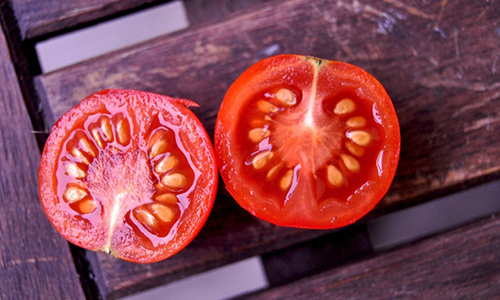
Tomato seeds want just a little additional care earlier than storing to extract the pulp. Begin with a completely ripe tomato and scoop the seeds out, inserting them in a clear container. Fill the jar with water, cowl with a lid and allow fermentation of the seeds. Take away the seeds a number of occasions a day earlier than the seeds fall to the jar backside and the pulp rises to the highest. It takes between 5-10 days.
Skim off the pulp and apply a strainer or cheesecloth to the seeds. Place the seeds in a properly ventilated space to dry in a single layer on paper towels. The seeds needs to be dry and prepared for stocking in round two weeks.
2. Cucumbers
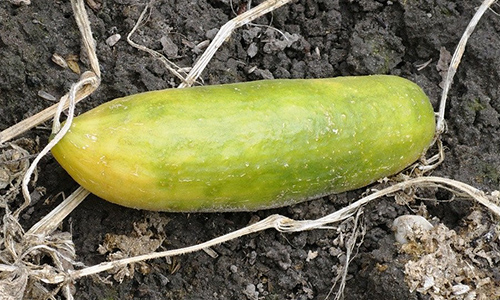
Select Cucumbers from one of the best open-pollinated heirloom plant when harvesting cucumber seeds. Depart the cucumber to mature on the vine. It turns yellow and turns into smooth. Slice the cucumber down the lengthy heart and scoop the seeds out as quickly as you decide it.
When you’ve got purchased the cucumber, go away it on the counter to ripen and switch yellow prefer it does on the farm, then scoop the seeds to ferment and save.
In a glass jar or bowl, ferment the seeds, lined with heat water. The seeds will at first float, however later sink. Fermentation removes the gel sac across the seeds and helps destroy any pathogens which will harm the seeds. Soak the seeds away from direct daylight, for 3 to 4 days.
The seeds that sink into the jar’s backside are prepared for harvest. Get rid of any seeds and pulp that float on high of the water. Pressure the seeds by a tremendous mesh sieve or cheesecloth and rinse away any remaining gel sac. Unfold the seeds onto a chunk of paper towel and put aside to dry for a number of days.
Preserve them out of the solar till totally dry, often for 4 or 5 days, after which retailer them in a seed envelope or a small glass container. Mark the container and put it within the freezer, the place obligatory, to kill any bugs or ailments that survived fermentation for a number of days. Retailer the seeds in labeled, cool, dry, darkish place.
Associated: The place to Discover Seeds if it’s Off the Cabinets Proper Now
3. Potatoes
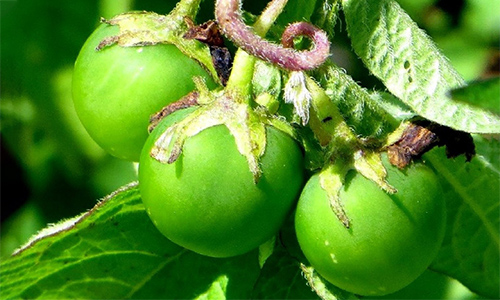
Most potatoes are produced from seed potatoes, however they are often grown from seed. Potatoes don’t all the time yield seeds however might have sufficient pollination from bees when the climate is delicate.
The plant ought to develop a small fruit or berry resembling a small tomato. The ripe fruits are sometimes inexperienced, or purple. They’re considerably poisonous and never edible however can include a number of hundred potato seeds in each berry.
In case your potato plant produces berries, additionally known as “seed balls”, you possibly can harvest the seeds by leaving the berries on the plant, till they’re utterly ripe and really smooth. Squeeze the seeds out of the berries and wash them with a gentle detergent to remove the germinating inhibiting compounds. Dry the seeds for storage, and plant them as you’d a tomato seed when they’re prepared, beginning them indoors early.
4. Onion and Garlic
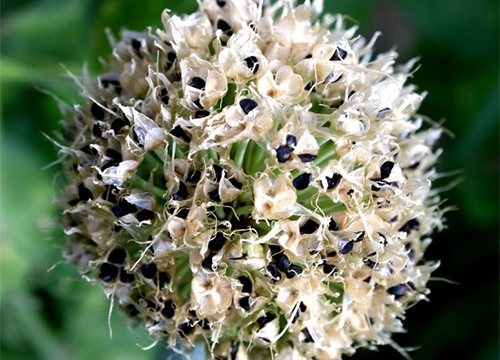
Most gardeners take out their onions lengthy earlier than the plant begins blooming. However if you happen to go away, seeds will ultimately be harvested for later planting.
The primary side to harvesting onion seeds is the choice of a non-hybrid or heirloom onion selection. One other issue is that the onions are biennials, which means throughout the second 12 months they develop flowers and seeds.
If the bottom in your space freezes in winter, you’ll must dig up the onion bulbs and retailer them in a cool place throughout winter time. Then they replant within the spring. The plant will ship a flowering stalk up after the leaves have regrew.
When the flowering heads flip brown, it’s time the seeds have been harvested. Take away the flowering head by clipping a number of inches underneath the top with shears. Place them in a paper bag, and permit them to dry for a number of weeks in a cool, dry place. When drying the flowering heads shake off the seeds. Retailer them in a cool dry spot, labeled out.
In the identical method, garlic seeds are harvested, permitting the scapes to bloom and produce seed.
Associated: 47 Gardening Hacks
5. Carrots
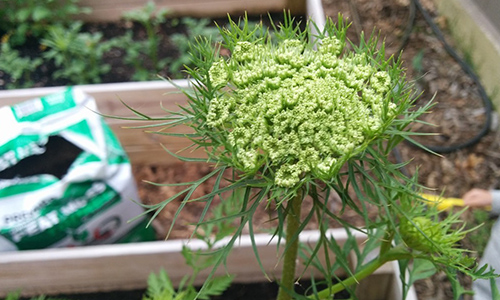
Of their second 12 months, carrots flower, and if you wish to decide carrot seeds, go away one of the best carrots within the discipline on the finish of the primary 12 months and skinny them to three inches aside. Take away useless and broken leaves within the spring of the second 12 months, however keep away from utilizing pesticides. The flowers are pollinated by bees and flies which might be harmed by pesticides.
Watch the plant intently for seed manufacturing after the flowers present up and are pollinated. After they flip brown and loosen from the umbels, the seeds are mature and prepared for harvest. They’re staying on the plant due to the small hooks which preserve them in place. Lower the seed stalk and place them the other way up in a paper bag when round 80% of the seeds are mature. Depart them up a number of days to dry.
Shake them when the stems are dry, to launch the seeds into the jar. Place the seeds in fridge in a jar with a tight-fitting lid.
Associated: What’s Hydroponic Gardening?
6. Asparagus
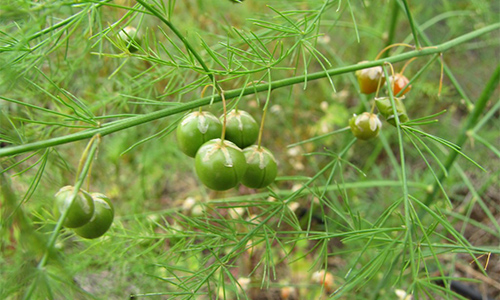
When you’ve got asparagus crops in your backyard, each female and male, you might discover asparagus seeds throughout fall. In small berries, the seeds develop which flip darkish crimson once they mature. Although asparagus is often grown from crowns, these seeds are fertile and, when correctly collected, will germinate in your backyard.
When the berries flip vibrant crimson, and the tops begin falling over, lower off the plant’s leafy tops. Hold the tops the other way up over a bowl or tray in a heat , dry room for a few week, till the berries on the floor begin to dry. The bowl will catch and berries that fall off.
When surfaces of the berry have began drying, pluck the berries off the stems of the plant. Place in a bowl of lukewarm faucet water and soak for 1 to 2 hours. Break open the berries along with your fingers and take off the seeds. Place the seeds right into a cheesecloth-lined mesh sieve. Rinse it underneath cool water to take away any remaining berry pulp.
Pat the seeds with a paper towel and distribute them to dry on wax paper or parchment paper. Dry the seeds for a few week, turning them up as soon as a day, till they’re utterly dry. Retailer the seed dried in a sealed jar containing silica gel to soak up extra moisture. Label the jar and retailer in a cool, darkish place, or within the fridge till planting.
Associated: How you can Produce Indoor Hanging Meals
7. Broccoli
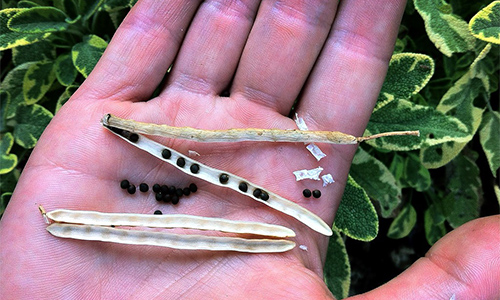
Broccoli is often harvested earlier than it seeds as a result of as soon as the flowering stalk seems the plant turns into bitter. For those who go away it alone and let it bloom, nonetheless, the plant will yield a large number of seed pods.
When most seed pods have dried and turned brown, lower off the plant branches and permit them to dry in a paper bag even additional. Take away the pod items as soon as the pods are opened, and retailer the seeds in a cool dry place.
8. Zucchini
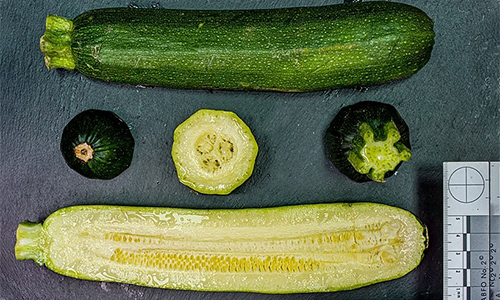
The zucchini seeds in your grocery store fruit are immature, however go away the zucchini on the plant for a number of extra weeks and also you’ll have viable seeds for planting within the subsequent few years. I recommend that on the finish of the season you permit a number of squashs in your most prolific crops. The squash grows large, and the pores and skin is hardened. It is possible for you to to dent the pores and skin along with your fingernail as quickly as it’s prepared.
Lower the zucchini lengthwise, and scoop out the seeds. To take away additional pulp, rinse the seeds in heat water and scatter them over wax paper or parchment paper to dry. Put them for per week or so in a properly ventilated space, stirring them recurrently in order that they dry out evenly. Retailer the dried, labeled seeds in an hermetic container and place them in a cool, darkish place till they’re prepared for planting the subsequent spring.
For those who comply with the steps I outlined right here, you need to have a gradual provide of seeds to your backyard. Begin with heirloom fruit for finest outcomes, and plant it away from different varieties that may cross them. You need true seeds that can produce wholesome, productive crops.
For those who don’t have fruit that’s heirloom, plant what you might have and produce the healthiest crops you possibly can. Plant greater than you assume you’re going to want, as a result of hybrid seeds should not true to the mom plant and will not produce properly.
Learn to develop a backyard and save seeds now whereas the seeds are plentiful, and in the event that they develop into scarce you’ll be ready. Expertise your backyard, preserve your crops, and put together for the unexpected.


